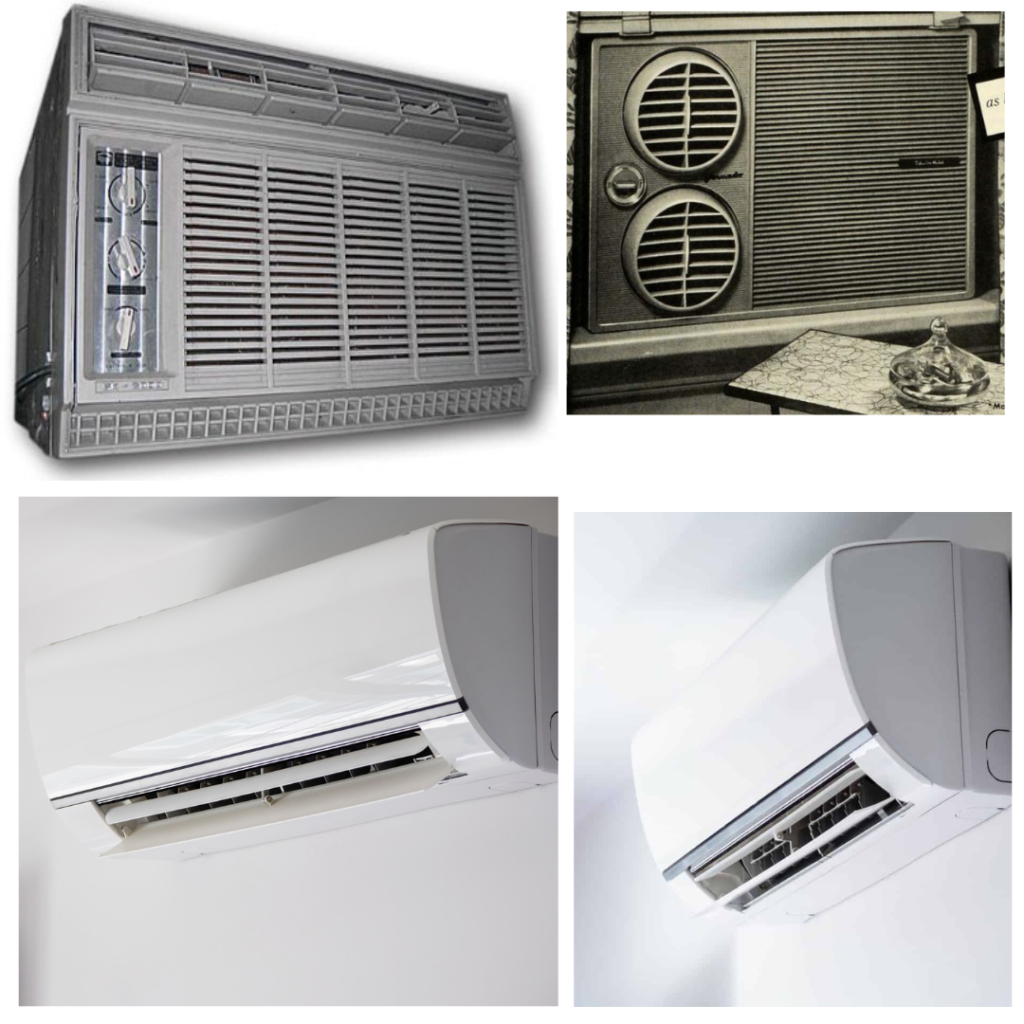Ductless Split History

The history of ductless split systems dates back several decades and involves technological advancements in heating and cooling solutions. Here’s an overview of the key milestones in the history of ductless split systems:
Early Air Conditioning Concepts (1900s):
- The concept of air conditioning began to develop in the early 20th century. Window air conditioning units were among the first cooling solutions, but they were not efficient and required manual adjustments.
Introduction of Ductless Technology (1930s-1940s):
- The first ductless air conditioning systems, known as “split systems,” emerged in the 1930s and 1940s. These systems divided the indoor and outdoor components, allowing for more flexible installation options.
Advancements in Mini-Split Systems (1960s-1970s):
- In the 1960s and 1970s, mini-split systems were developed as an alternative to traditional central air conditioning. These systems utilized smaller indoor units and eliminated the need for extensive ductwork.
Expansion of Ductless Split Systems (1980s-1990s):
- The 1980s and 1990s saw increased popularity and adoption of ductless split systems, especially in commercial applications and homes where ductwork was impractical.
Energy Efficiency Improvements (2000s-Present):
- As energy efficiency became a significant focus, ductless split systems underwent improvements to enhance their efficiency, including the incorporation of inverter technology to adjust compressor speed.
Introduction of Heat Pump Technology (2000s-Present):
- Heat pump technology was integrated into ductless split systems, allowing them to provide both heating and cooling. This innovation further expanded the versatility of the systems.
Smart and Connected Systems (2010s-Present):
- In recent years, smart and connected features have been integrated into ductless split systems, allowing users to control temperature settings remotely and integrate their systems with smart home platforms.
Advancements in Design and Efficiency (Present):
- Modern ductless split systems feature sleek designs, improved energy efficiency, advanced filtration options, and low-ambient heating capabilities for colder climates.
The evolution of ductless split systems has been driven by the need for efficient and versatile heating and cooling solutions that can adapt to different living spaces and climates. Today, these systems are recognized for their energy efficiency, personalized comfort control, and flexibility, making them a popular choice for residential and commercial applications around the world.


